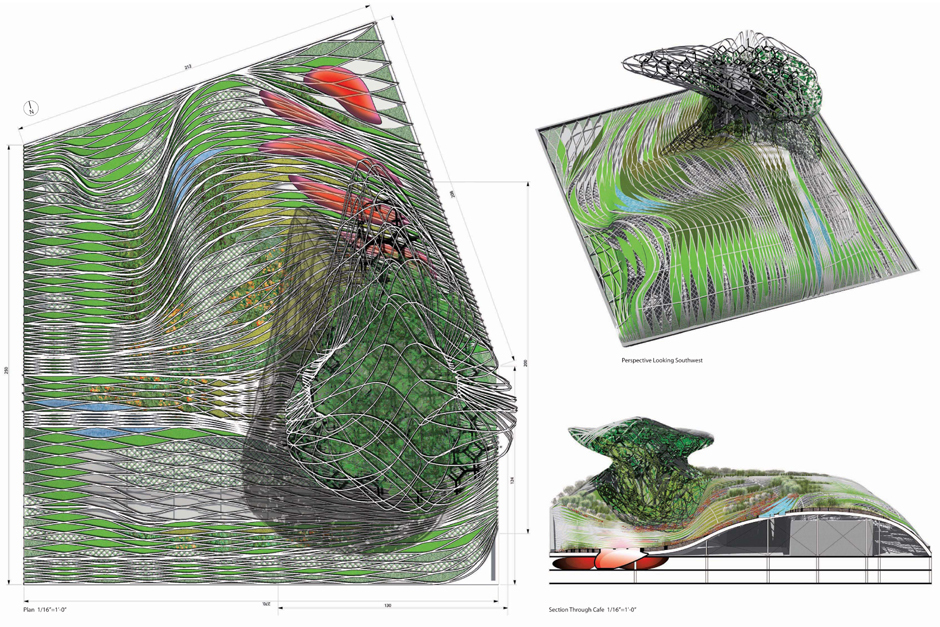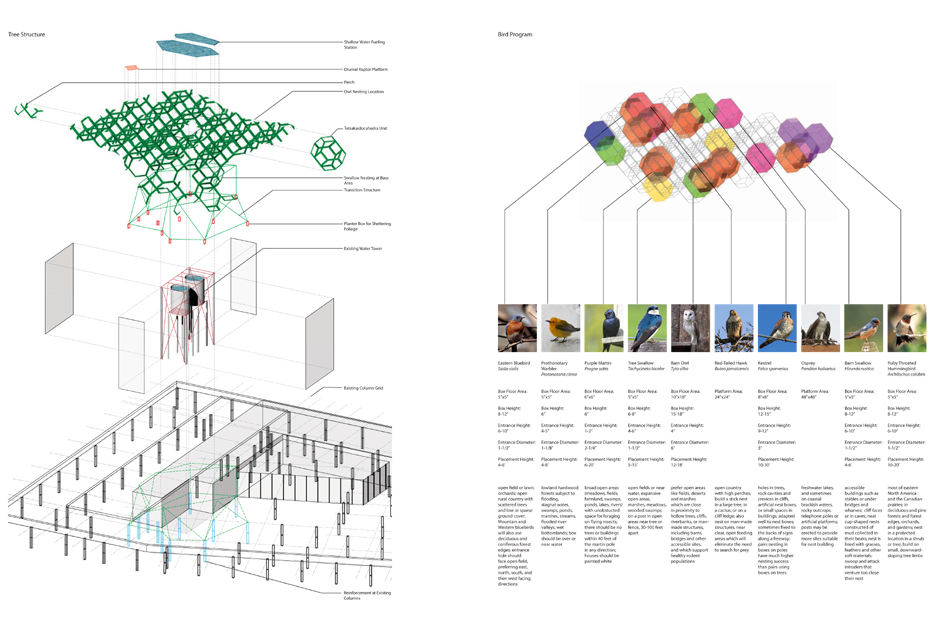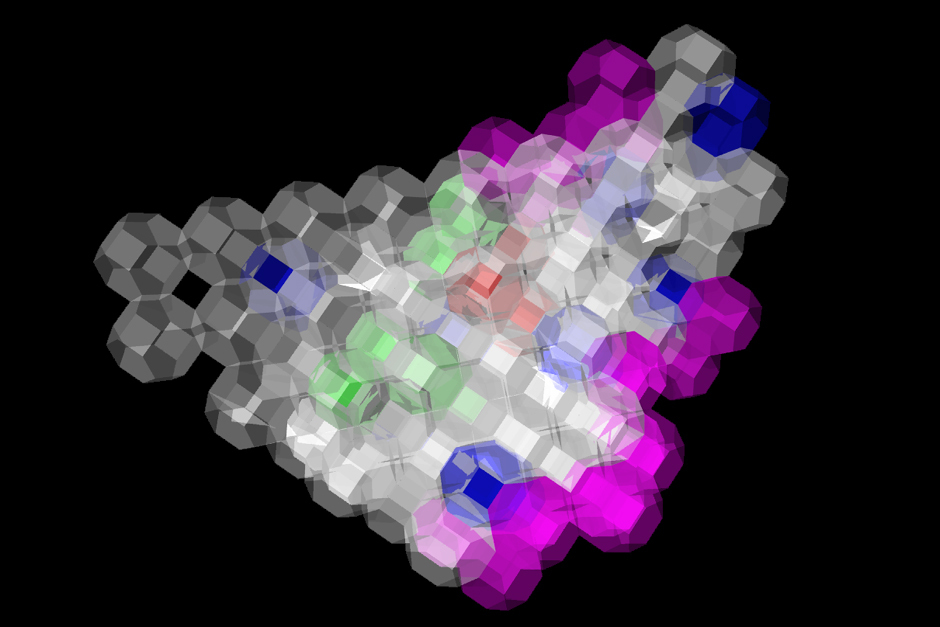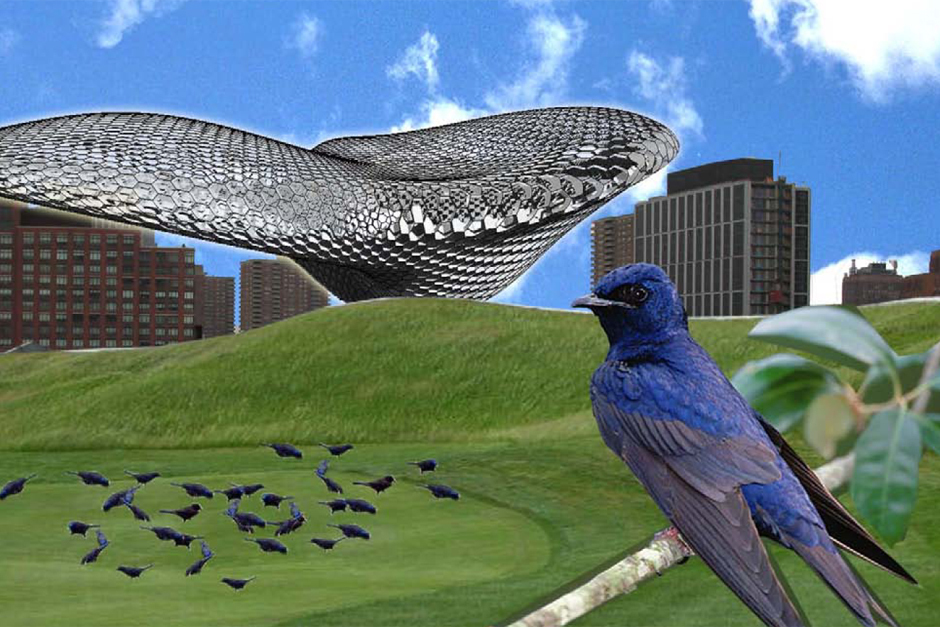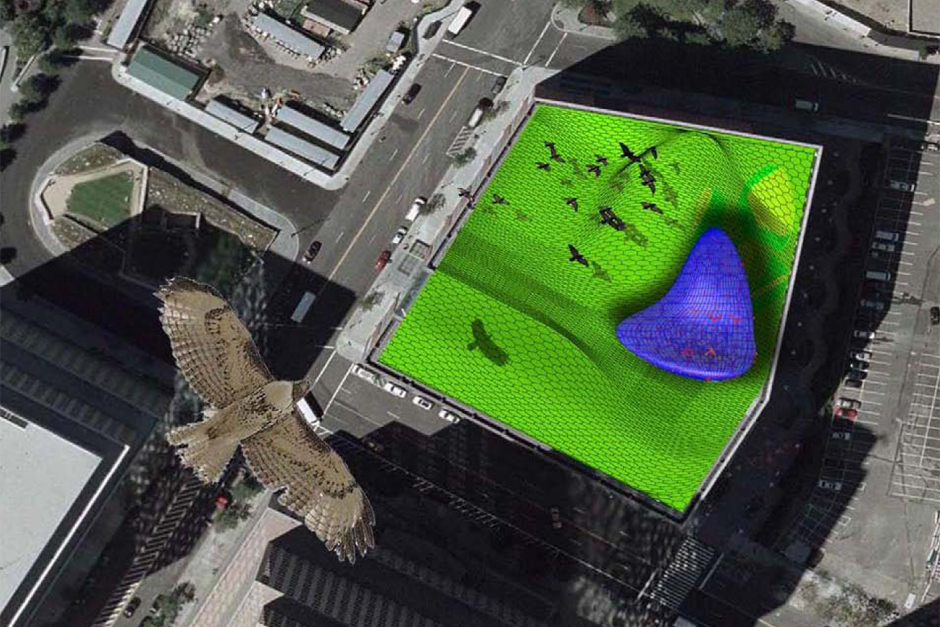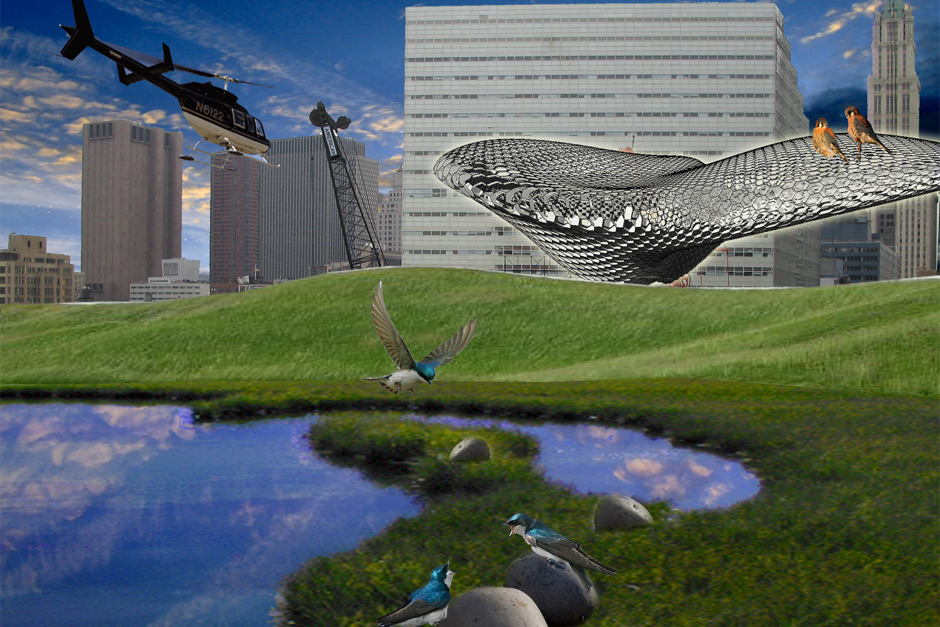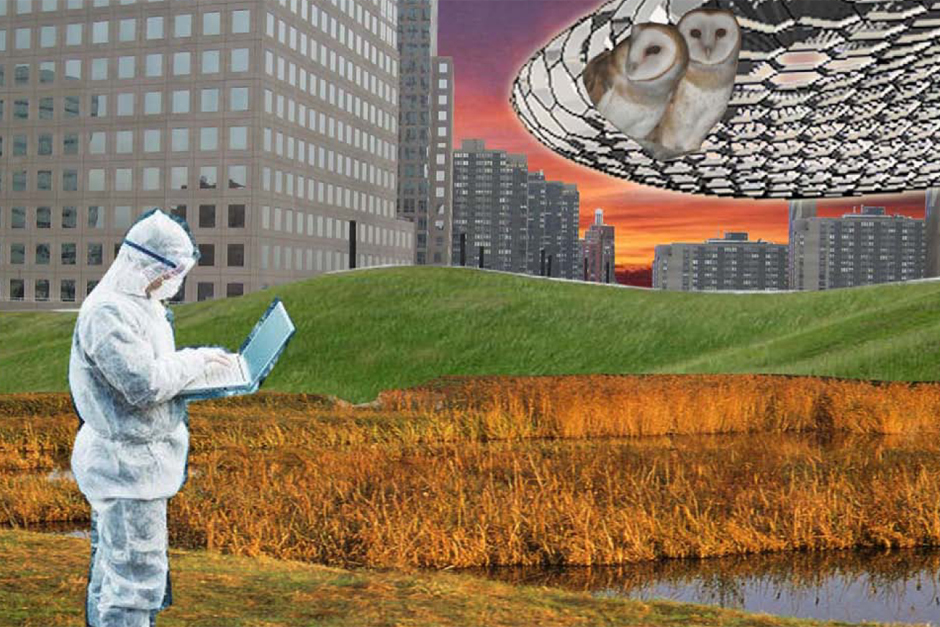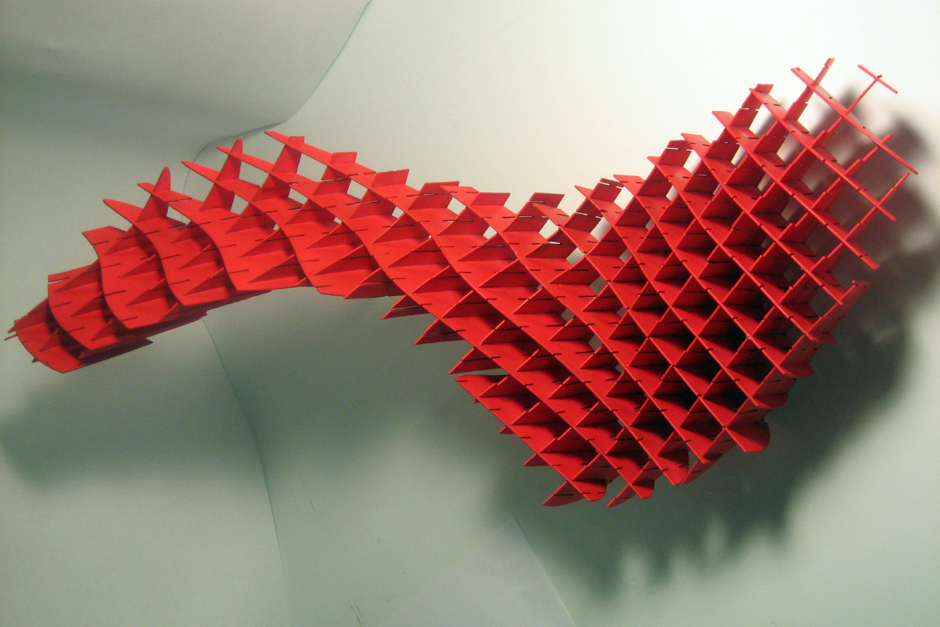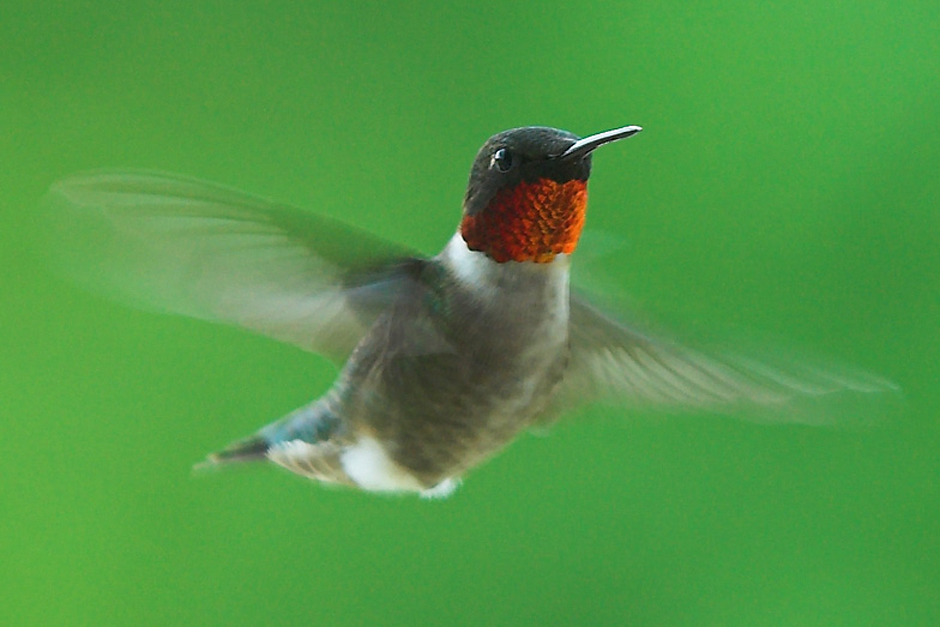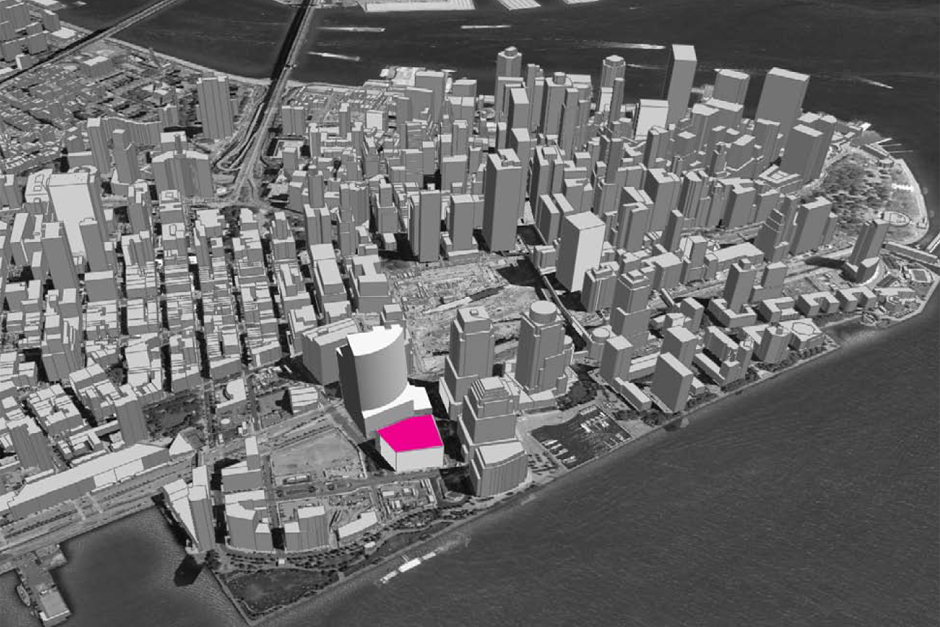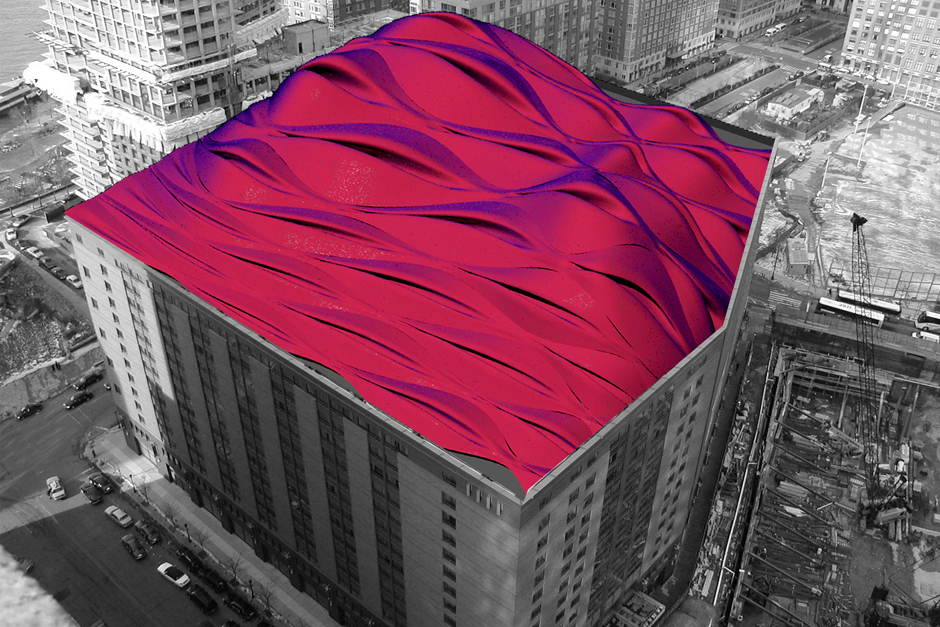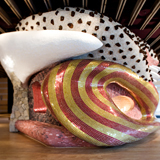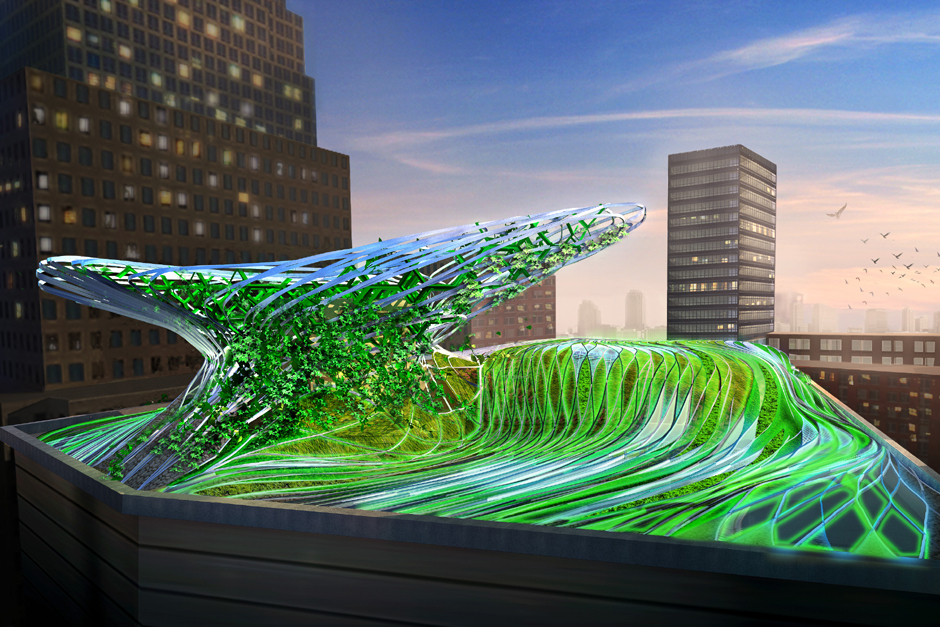
Biornis-Aesthetope: A fully supported avian habitat green roof structure
完全满足鸟类栖息地要求的屋顶花园结构
Biornis-Aesthetope
Lower Manhattan, NY
An unprecedented achievement in green roof technology, the Biornis Aesthetope design supports a functioning biotope for birds migrating along the Atlantic Coast Flyway. Sited in Lower Manhattan, the structure sits atop a 12 story building overlooked by a new headquarters for a major investment bank. Visible resting areas, water pools, and organic vegetation create a desirable destination for birds to stop over in the lower Manhattan area.
The green roof system of the proposed Biornis Aesthetope provides benefits which far surpass those of typical extensive and intensive green roof systems. During the design process, the strategic management of a matrix of variables, ranging from the use of organic and inorganic soil substrates, gradients of water retention, insect hibernation patterns, and vegetative planting; to the resulting structural loading and construction cost, allows the Biornis-aesthetope green roof system to be flexible through its myriad iterations and still function as healthy biotope.
The typical benefits of a green roof are economic and environmental. The benefits of Biornis Aesthetope are sociopolitical at a global scale and cultural at the local scale. This green roof’s ability to produce a living habitat—a community of flora and fauna, waxing and waning, growing and dying, changing through the seasons, and maturing through the decades—provides a constant, sustainable, and renewable interest in the performance of the green roof.
Biornis Aesthetope is a high-performance green roof capable of producing the correct conditions for the creation of a biotope. The sculptural expressiveness of the green roof is necessary for the completion a sustainable biotope. Equally important to environmental considerations, Biornis-aesthetope creates an icon not only for the client, but also for New York City, in the very location that America’s heart and national psyche feels a void and yearning for expression, identity, and icon.
BAM believes the green roof will not only be an international sociopolitical icon, but also its performance as a green roof will be an icon and milestone for the “green” movement as well as the green roof industry. Among the traditional benefits of a green roof are the reduction of heat island effect, reduction of carbon dioxide effect, the reduction or airborne particulate matter, reduction of rainfall run off impacts, reduction of heating and cooling loads, and the lengthening of roof life.
However beneficial typical green roofs can be, in the majority of cases, they cannot support habitats. The reason for this is that they are almost entirely made from artificial materials. In considering the entire construction assembly, everything except the plants themselves are created from artificial materials. To keep the weight of the assembly as light as possible, the soils usually contain as little as 5% organic material. This means that 95% of the materials are inorganic and/or manufactured. Artificial materials are not necessarily bad, as they allow the weight of the roofs to be such that they are affordable and applicable in many situations; however, they are not sufficient for the production of a sustainable ecology.
The green roof of Biornis Aesthetope utilizes both organic and inorganic soil mixture types. One type is used in the extensive roof system, with inorganic soil mix, and the other type is an intensive green roof system, with a deeper technical section, ranging from 12 to 36 inches and containing soil mixtures with no less than 15% organic matter. 15% organic matter is crucial for insect habitation because without organic matter insects cannot be sustained. If the insects cannot be sustained, then the birds will not have a food source, and without a food source, birds will not use the roof as a refueling station, and if the birds do not use the roof, then the energy of the roof as a living organism cannot exist.
The depth of the intensive organic soil regions is important because it allows for vegetative plants to grow, which yields alternate and differentiated food sources. This is necessary for the creation of a community with complex ecological relationships. In the intensive regions of the green roof, the combination of soil depth and organic matter allows those regions to create biological identity and take on unforeseen characteristics as well a additional plant species that were not part of the original plantings. Eventually, tree saplings will take root. To prevent the growth of large trees (which the structure will not be able to support) the roof must be maintained twice a year to free it of saplings beginning to take root in the intensive regions. (Project completed by BAM in the office of Martha Schwartz, Inc.)
Project Facts Client: __ Structural Engineer: Buro Happold Ornithology Consultant: Scott Edwards, Harvard University Ornithology Consultant: Viviana Ruiz-Gutierrez, Cornell University Green Roof Technology Consultant: Christian Werthmann, Harvard University
高盛总部Biornis-Aesthetope
纽约市曼哈顿区
作为屋顶花园科技的空前成就,Biornis-Aesthetope设计过程中充分考虑到了楼顶的生态点作用,为沿大西洋沿岸飞行的候鸟提供了休憩场所。本设计位于曼哈顿一个十二层建筑的顶部,从高盛的新总部可以鸟瞰其全景。开阔的休憩区域,几个水池,完美的生态绿植,这些共同为途经曼哈顿的候鸟提供了甚为不错的休憩场所。
Biornis-Aesthetope由高盛集团提议修建,与一般的粗放型屋顶花园系统和集约型屋顶花园系统相比,本屋顶花园系统更具优势。在规划过程中,我们不仅考虑到了有机土壤基板和无机土壤基板的使用,保水性坡度的使用,昆虫冬眠模式和植物种植因素,而且还考虑到了由此引起的结构负荷及结构成本因素。因此,通过无数的迭代,矩阵变量的战略统筹既使得本规划灵活性更强,又丝毫没有削减其作为健康生活区的功能。
一般屋顶花园的优势在于经济,环保。而Biornis-Aesthetope的优势在于融合全球范围内的社会政治和当地的文化精髓。本屋顶花园制造了一个生物栖息地, 月圆月缺,四季变化,动植物们生老病死,几十年来生命不断的循环着。屋顶花园越来越美,高盛集团就在这样优美的环境中不断壮大。
作为高性能的屋顶花园,Biornis-Aesthetope将为创建生态单元提供合适的条件。要想建造一个可持续性的生态单元,花园中雕塑表现就显得必不可少了。出于环保考虑,更出于对高盛集团及作为美国心脏的纽约的形象考虑,我们将Biornis-Aesthetope设计成雕塑样式。整个民族都能在灵魂深处感到它的表现欲,对身份特殊性的呼唤以及对雕塑空间感的追求。
高盛屋顶花园不仅会成为国际社会政治雕塑,而且作为花园,它的性能将成为绿色运动和屋顶花园业的纪念碑和里程碑。本花园除了具有一般屋顶花园的优势外,还具有降低热岛效应,吸收二氧化碳和大气颗粒物,降低雨水冲刷的影响,减少供暖供冷负荷,以此达到节能减排和延长屋顶使用寿命的优势。
无论一般的屋顶花园有多好,通常情况下,这些花园都不会成为动植物栖息的场所。原因很简单,因为几乎所有的东西都是由人造的。考虑到整体建筑架构因素,除植物以外的所有东西都是由人造材料购构成的。为尽量减轻架构重量,通常土壤中只含有5%的有机物。这意味着95%的材料都是无机或者人工材料。这并不是说人造材料就不好,毕竟在很多情况下这种材料即便宜又实用。然而,要构造可持续性生态环境,这些是远远不够的。
Biornis-aesthetope 屋顶花园使用既有有机土壤又有无机土壤的混合型材料。屋顶系统分为两种,一种是粗放型屋顶系统,使用无机混合土壤。另一种是集约型屋顶花园系统,使用更深入的技术剖面。剖面范围从12英寸到36英寸不等,并且土壤中有机物的含量不少于15%。15%的有机物是虫类生存必不可少的,换句话说,虫类如果没有有机物就无法生存。如果虫类无法生存,鸟儿就没有食物来源;如果鸟儿没有食物来源,也就不会到屋顶栖息;如此一来,作为生物体承载体的屋顶也就失去了其存在的价值。
为保证绿色植物的生长,集约型有机土壤的深度就显得极为重要。只有这样,绿色植物才能提供丰富多样的食物来源。而这些食物又是创建复杂生态体系所必不可少的。在屋顶花园的集约型区域内,土壤深度和有机物有效组合,使这一区域产生了生物特性;由于这些植物不属于原始种植,可能会产生始料未及的特性。树苗最终会扎根。为防止树木长得过大(条件有限),必须一年两次到屋顶进行修剪树根。(该项目由BAM在玛莎施瓦兹公司完成)
工程有关方面 结构工程师:保罗.哈波尔德(Buro Happold) 客户:__ 鸟类学顾问:斯哥特.爱德华兹(Scott Edwards) 来自哈弗大学; 维维亚娜.鲁伊斯-古铁雷斯(Viviana Ruiz-Gutierrez) 来自康乃尔大学 屋顶花园技术顾问:克里斯琛.威特曼(Christian Werthmann) 来自哈弗大学
